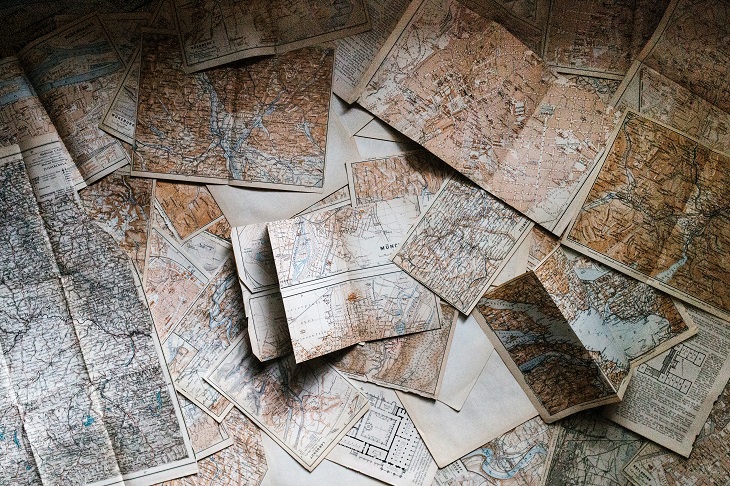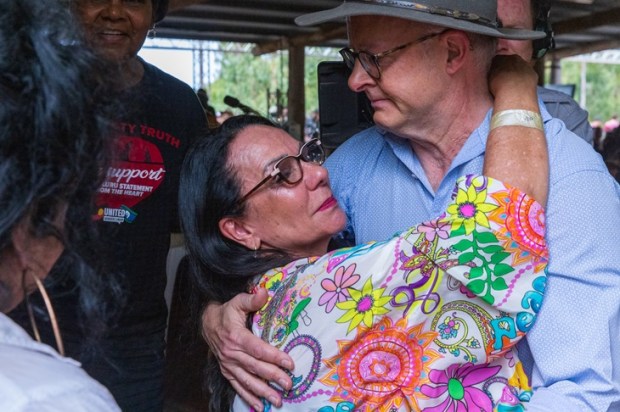The last major Ice Age – The Quaternary Ice Age – started over 2.5 million years ago (mya) and is still going with intermittent Warming Periods, such as what is being experienced now. During one of the most recent peaks of cold, about 50,000 ya, land bridges formed from the Bering Strait North-East of Alaska and the many islands within The Banda Strait of South-East Asia.
Anyone who owns beachfront property, or is a regular visitor to beaches or islands, will know that sandy shorelines can vary from tidal waves cutting back to 10m high precipitous cliffs and through to long, extended deep beaches trapping tidal sands stretching into surrounding seas and oceans all in over a few years. In an Ice Age (and we are in the Warming Period of one now), the global ice mass takes up ocean, sea, and on-land waters thereby lowering the global water height and creating land bridges across seas, oceans, and land. 50,000 years ago, Australia, the last shard off Pangaea and Gondwanaland, had both New Guinea and Tasmania still attached after floating, like a raft, away from what is now Antarctica.
The Red Sea was then a land-locked sea – easy for homo sapiens to cross from frozen zones of Southern Africa and droughts in other areas to follow along the East Coast where the Indian Ocean lessened the ‘freeze’ crossing over the warmer climes of the Equator from India and South-East Asia. That was what Australia was back then – part of a land mass connected by changing islands and isthmuses known as ‘Meganesia’. It was also identified via submerged sandbanks as The Sahul by Matthew Flinders in 1803 when charting the coastline of Australia.
There followed an Inter-Ice Age Warming that melted the ice sheets. Sea levels rose and so ended the migration of small tribal groups – some still wearing the DNA of San Bushmen from the Kalahari along with those showing Homo Floresiensis characteristics (Pygmy people of from the island of Floresiensis). This was noted by my cousin, a doctor who works with tribal communities across Africa.
The easy access for some small tribal ‘survival-sized’ groups of 12 -20 individuals over some 30,000 years into Australia from Africa, the Indian Sub-continent, and Asia meant there would never be ‘One Voice’ nor one religion as the various tribal beliefs were based on natural ‘paganist’ observances of phenomena relating to their nomadic and seasonal territories. Each of these tribal groups carried their own hunter-gatherer background, languages, and supernatural and natural observances, seeking their own pathways into this unknown vast landscape and avoiding conflict with those tribal groups already established. There was no unity of Voice. Not then and not now, especially after the end of the Ice Age and the separation of Raft Australia from Meganesia leaving what we now know as New Guinea behind and turning what were huge northern wetlands into the Gulf of Carpentaria.
Next to board Raft Australia were people from the Northern Hemisphere. The Dutch (who created both the Dutch East Indies Company and the Stock Exchange), encountered the islands off Western Australia. There were excursions down the North-East Coast by the Spanish and Portuguese including a ‘Spanish’ boat abandoned in 18 Mile Swamp on North Stradbroke Island where local Stradbroke tribes were found to have Spanish doubloons in the mid-1800s; the French, after more colonial territory hunting expeditions (hence Fleurieu Peninsula in SA, Freycinet in Tasmania, Akaroa NZ with its many French named streets); and Abel Tasman, Dirk Hartog, James Cook all of whom touched land/stepped onto Australia from the 1600s through to the late 1700s looking to extend their European territories into a huge new landscape of resources and riches in the Southern Hemisphere. The English won the race by seamanship and by commercial savvy.
The next influx came by boat as convicts, settlers, government officialdom, early business, and farming entrepreneurs from Europe, the South Sea Islands, the Indian Sub-Continent, South East Asia, and those from North America and China chasing jobs and turning Australia into a proper ‘melting pot’ of ethnicities, cultures and belief systems that included many local tribal groups by engagement, work and – ultimately – a multi-cultural society.
The lure of Australia as ‘The Land of Opportunity’ is still bringing in smuggled persons and now government-sponsored migrants from across the world. But, Australia has another title: ‘The Driest Inhabited Continent on Earth’. This brings up some absolute, resource-based restrictions to holding out the vacancy sign.
Where are these new 400,000 or so migrants going to live as we already have an alarming growth in homelessness, lawlessness, and although there is a listed low rate of unemployment against more seeking Job Seeker handouts while the building and hospitality industries are failing to find workers and are closing down. Where will these new arrivals get a job to keep them and their families on the straight and narrow, especially in the coming drought and credit squeeze?
Got something to add? Join the discussion and comment below.
Get 10 issues for just $10
Subscribe to The Spectator Australia today for the next 10 magazine issues, plus full online access, for just $10.


























Comments
Don't miss out
Join the conversation with other Spectator Australia readers. Subscribe to leave a comment.
SUBSCRIBEAlready a subscriber? Log in